Explore the top six institutional tools for trading in 2025. Learn how LevelFields can help you find the best investment opportunities fast.
Trading Strategies
Table of Contents
Institutional traders face constant pressure to deliver faster executions, manage large trade volumes, and make data-driven decisions, all while meeting regulatory compliance.
However, market volatility, fragmented liquidity, and the need for market analysis make trading far more demanding than ever.
That’s where institutional tools for trading come in. These platforms provide the necessary structure and automation to handle multi-asset portfolios, improve accuracy, and react instantly to market trends.
This article lists the best institutional trading tools you can use to manage large-scale transactions with confidence.
Institutional trading tools are advanced software systems built for investment banks, hedge funds, and asset managers that handle high-volume and complex trading operations.
Unlike retail trading tools, which focus on individual investors, institutional platforms manage large-scale transactions, different asset classes, and cross-market execution.
These tools offer real-time market data, advanced analytics, and automated systems that help trading desks make faster, smarter decisions. They also include strong compliance, order routing, and risk management capabilities designed for regulated environments.
Institutional trading tools are designed for precision, speed, and reliability. They give large financial firms the necessary technology to compete in modern financial markets.
Institutional traders use several specialized platforms designed to handle complex transactions and maintain accuracy across global markets. These include the following:
Below are the best institutional trading platforms you can use.
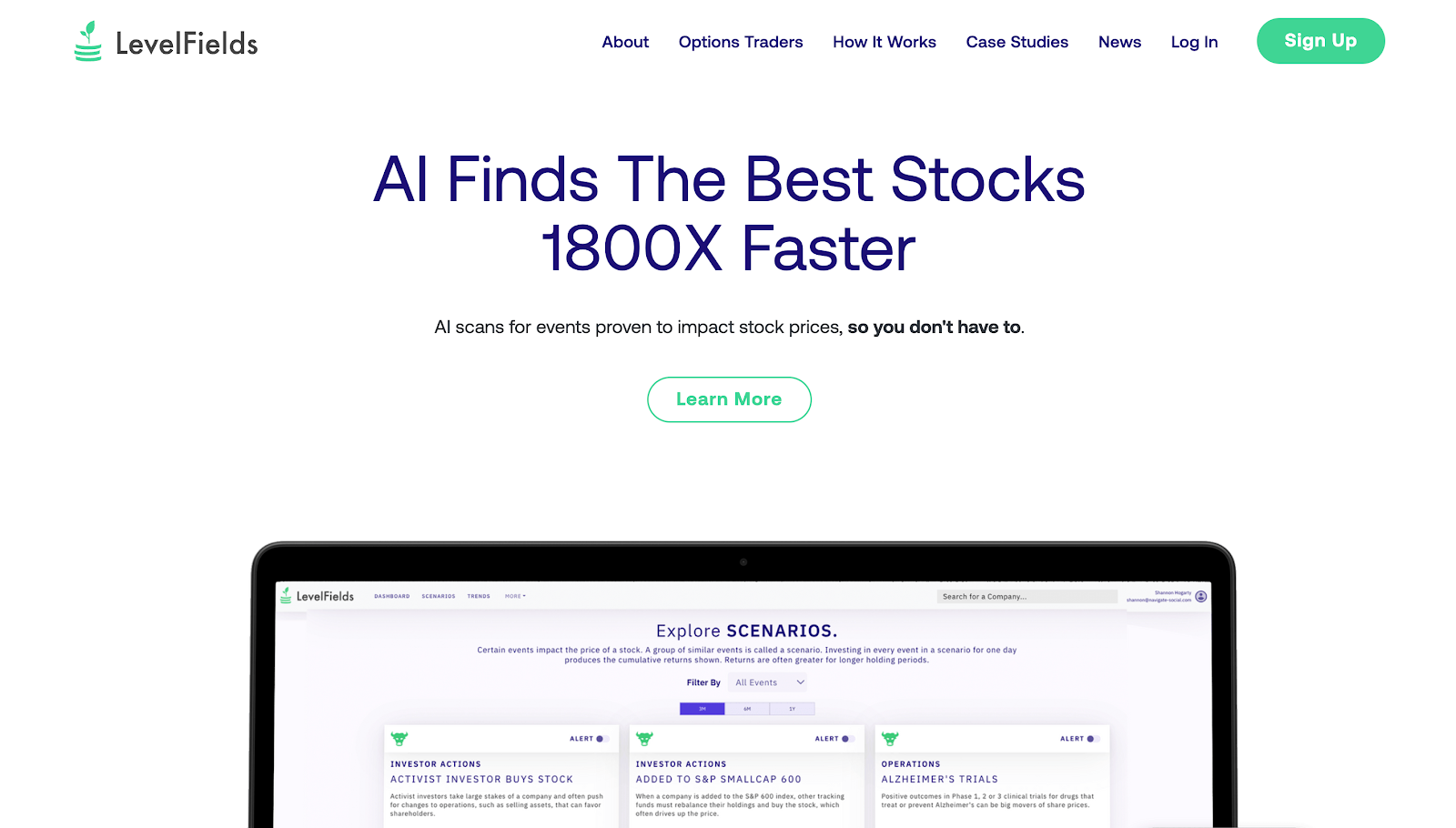
Best for: Institutional trading desks and large financial institutions seeking data-driven insights to identify profitable opportunities quickly.
LevelFields is an AI-powered institutional trading tool that analyzes millions of events proven to move stock prices. These include mergers, activist investments, buybacks, earnings surprises, and leadership changes
Once the platform detects key market events, it immediately surfaces entries, exits, win rates, expected returns, and more. It also pushes instant alerts to your email or phone via SMS. This helps you find the best investment opportunities ahead of the crowd.
LevelFields even allows you to tailor signals to your playbook. Narrow events by sector, market-cap, scenario type, or time. Alternatively, add companies to your watchlist to monitor their performance and plan for upcoming events.
Plus, a unified dashboard frees up valuable hours every week. It combines alerts, stock news, watchlists, and statistics in one clean interface, so you can focus on trade execution.
For institutions, LevelFields reduces the time spent on research and helps uncover catalysts that traditional analysis might miss.
Join LevelFields today to turn your current setups into higher-percentage trades!
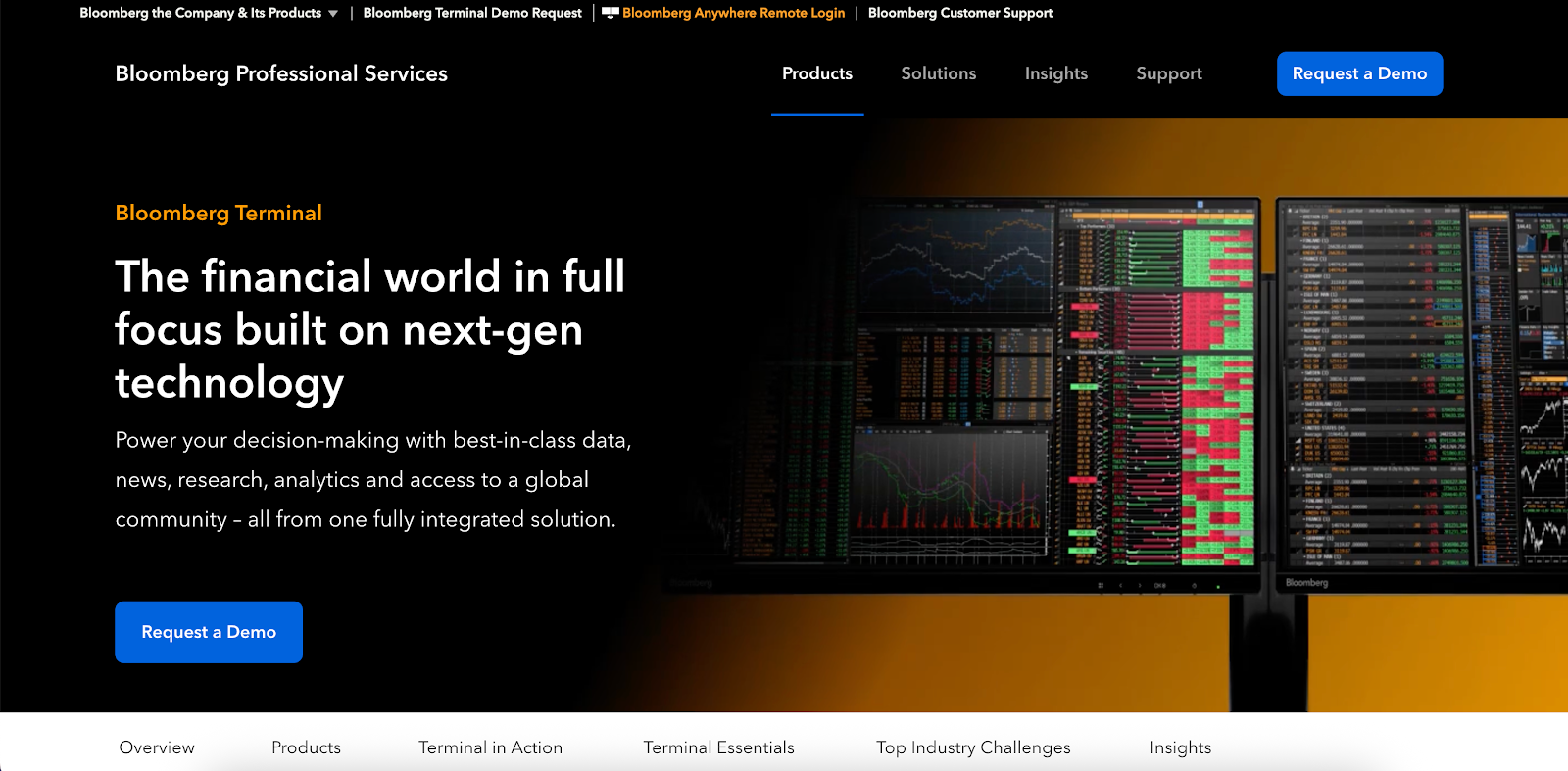
Best for: Large financial institutions and portfolio managers who need comprehensive data, analytics, and connectivity in a unified system.
The Bloomberg Terminal offers extensive market coverage across diverse asset classes. This institutional trading tool combines proprietary and third-party data, investment news, research, and workflow tools into a single integrated interface.
It helps you monitor live market movements, set alerts, and execute trades via its execution and OMS modules.
Bloomberg also supports collaboration through its network of over 350,000 influential decision-makers. Chat with other institutional traders, share market opportunities, and send news to the broader financial industry.
Plus, Bloomberg's built-in portfolio analytical tools help you minimize risks and uncover hidden performance drivers. It can even send timely reports to institutional clients, which can support better-informed decision-making.

Best for: Financial institutions seeking a multi-asset trading platform with built-in algorithmic capabilities and broad market access.
MetaTrader 5 is a Forex and stock trading tool that uses algorithmic trading applications and copy trading. It supports advanced order types, market depth, hedging methods, and a netting system for trading on exchange markets.
The platform also includes built-in indicators that help in the technical analysis of stocks, Forex, and futures.
Meanwhile, the pre-built MetaEditor acts as a convenient development tool. This enables traders to create their own trading robots and institutional methods.
Want to simplify trade execution? With MetaTrader 5, you can subscribe to signals of successful traders and copy their deals.
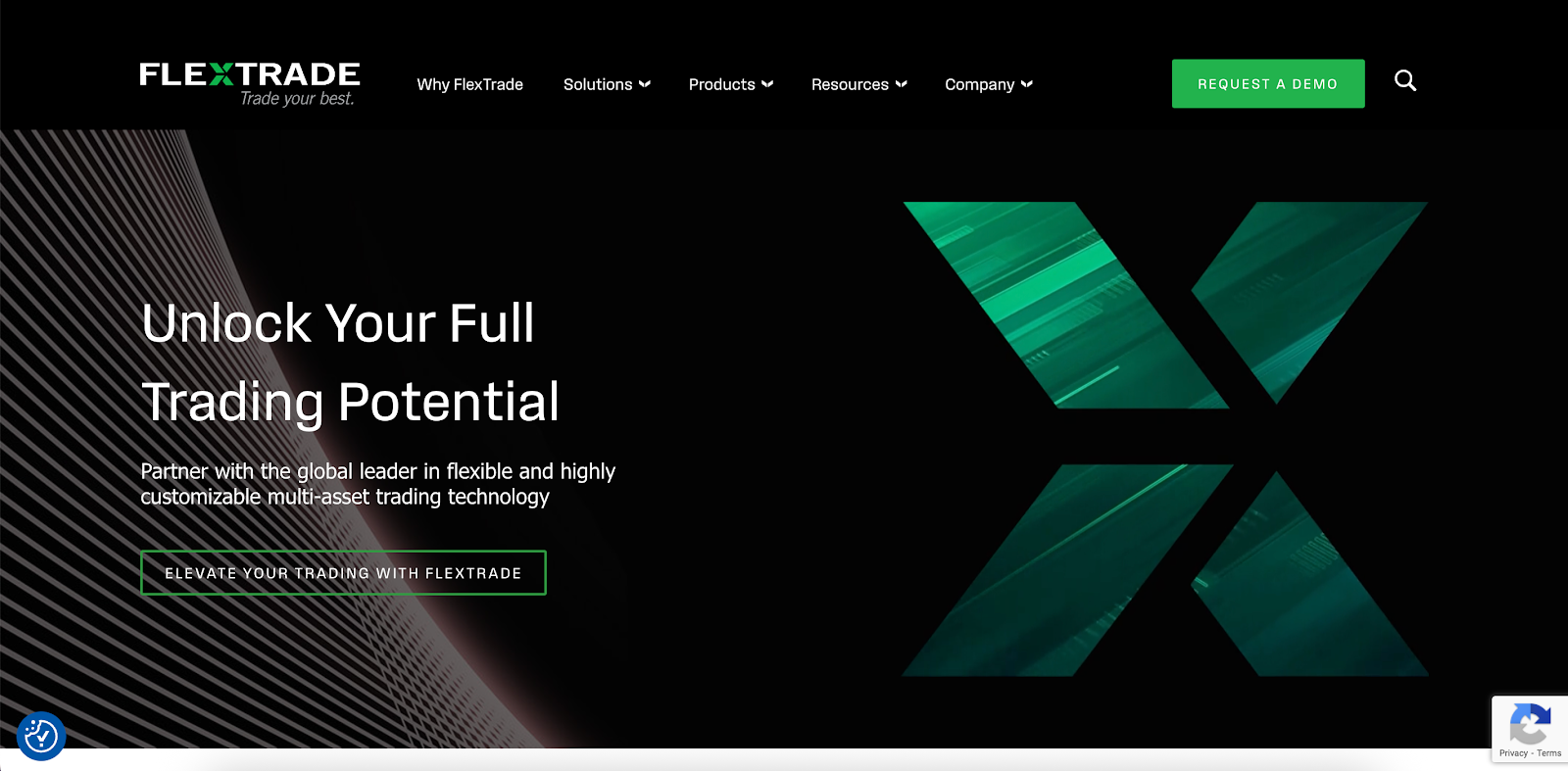
Best for: Institutional clients, such as asset managers, hedge funds, and brokerages, who need multi-asset execution and order management trading.
FlexTrade offers a modular suite of trading systems for both buy-side and sell-side firms.
Its flagship product, the FlexTRADER EMS, supports equities, FX, options, and futures with algorithmic execution, broker neutrality, and transaction cost analysis (TCA).
On the OEMS side, FlexONE gives you total control over all of your trading capabilities. It connects your front, middle, and back offices to ensure data integrity and smooth procedures. It also includes real-time portfolio management capabilities.
FlexTrade’s open architecture and API-centric design help you connect to multiple liquidity providers and exchanges seamlessly.
On top of these features, the platform offers fully automated trading strategies, analytics, and customizable technology.
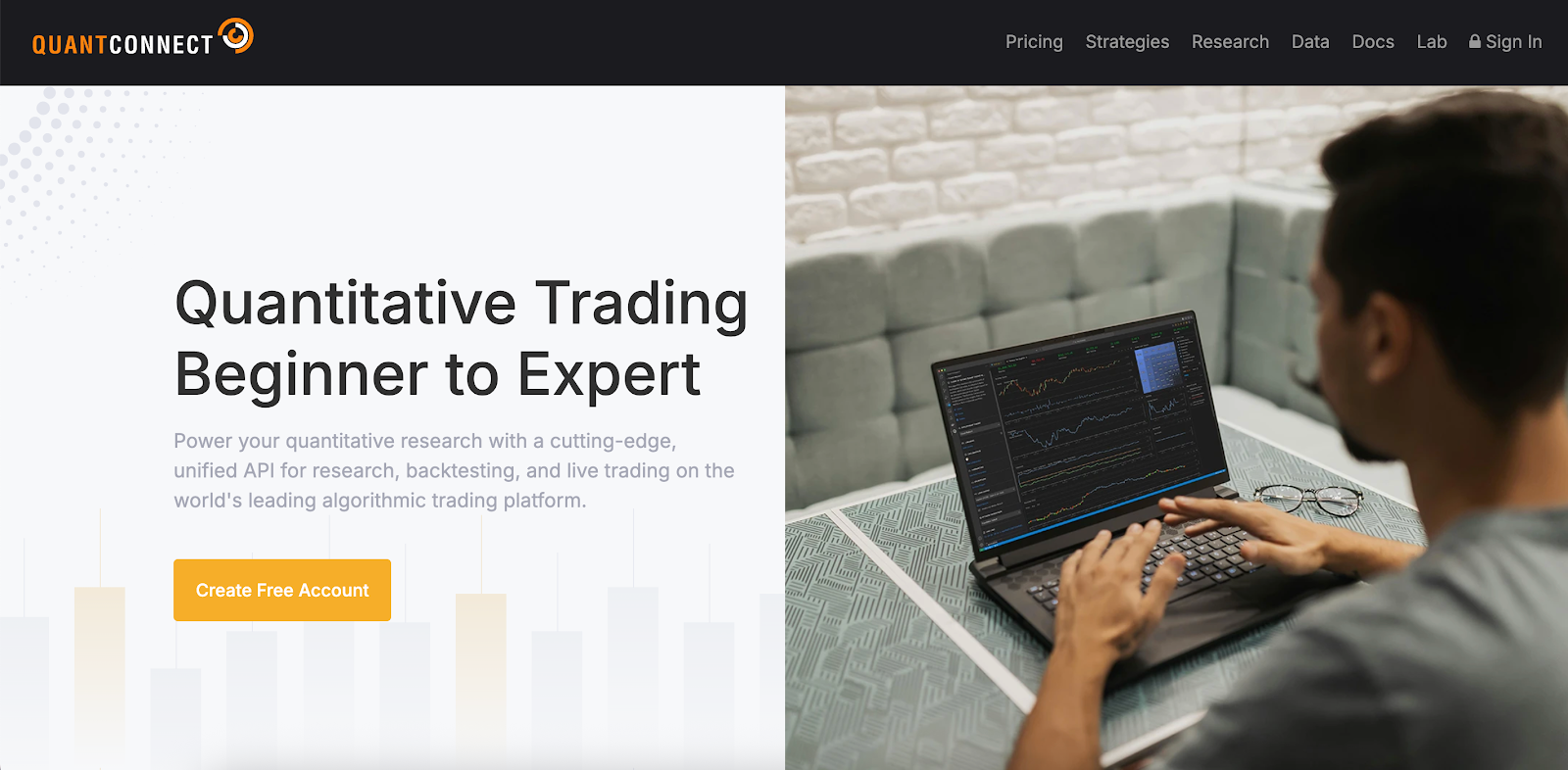
Best for: Quant and algorithmic trading teams seeking a flexible, scalable engine for research, trading backtesting, and live deployment.
QuantConnect is a cloud-native, open-source algorithmic trading platform powered by its LEAN engine. It lets you write, test, and run strategies across equities, futures, options, forex, and crypto.
Institutional clients benefit from higher-level tiers that unlock unlimited backtesting, private deployment, custom libraries, and live trading via broker APIs.
QuantConnect supports thousands of sophisticated trading strategies and manages billions of assets. It helps you build workflows that move from research to live deployment with transparency.

Best for: Financial institutions seeking a unified system that integrates trading, portfolio, compliance, and operations.
Eze Investment Suite is a complete front-to-back investment platform that covers trade order management, execution management, portfolio accounting, and compliance.
It provides open, vendor-neutral architecture and flexible APIs. This allows traders to link their existing systems, data vendors, and other advanced tools.
The platform also offers a holistic view of your compliance efforts. It can detect issues as they arise and send alerts for proactive resolution.
However, Eze Investment Suite is more than just another institutional trading tool. It acts as an extension of your operations team that can monitor trades and manage accounting.
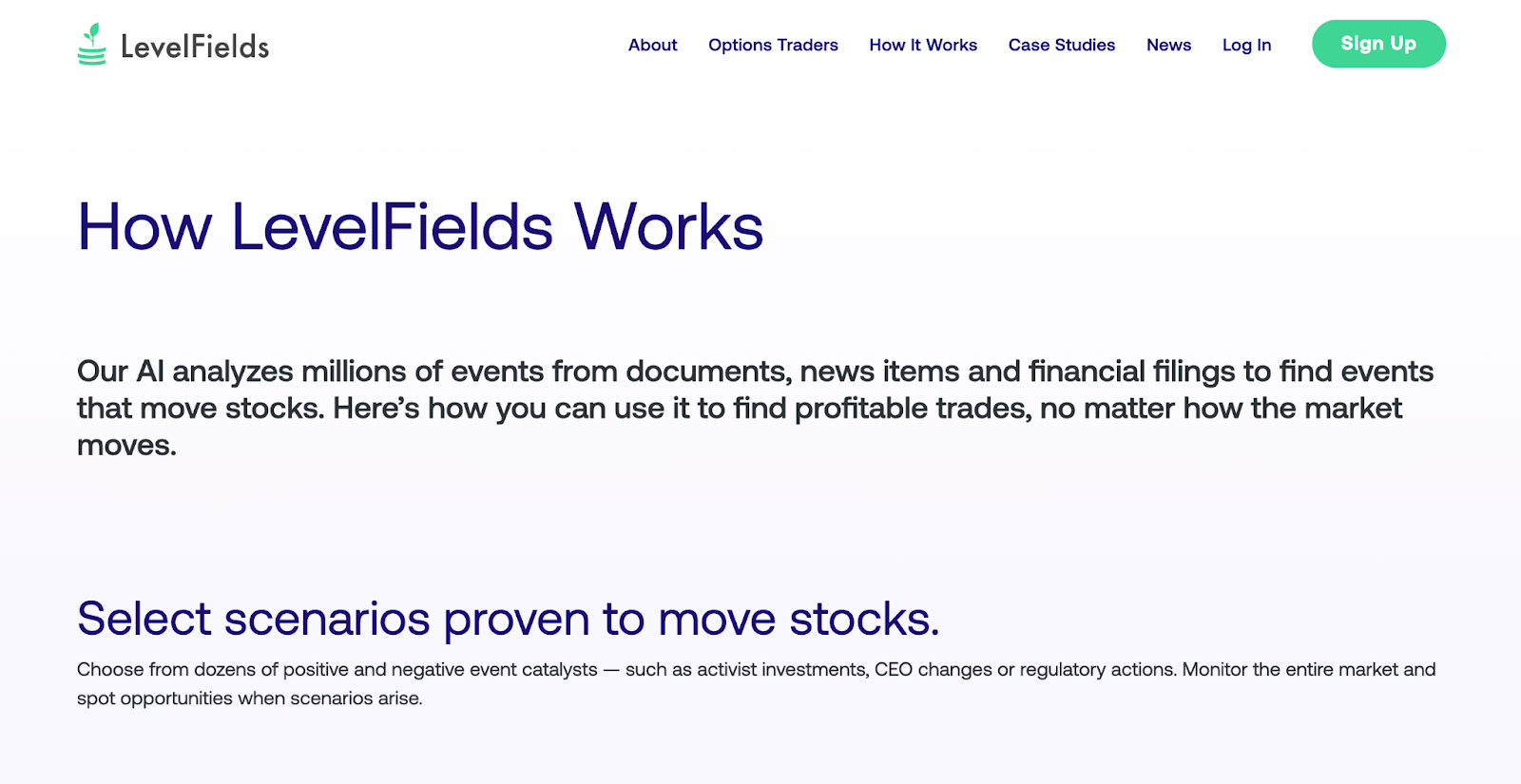
LevelFields is a valuable tool for institutional traders and financial firms that want deeper market insight.
The platform uses artificial intelligence to monitor thousands of publicly traded companies and identify major market-moving events. These include CEO departures, earnings surprises, buybacks, and mergers that often trigger significant price movements.
All you need to do is select the event categories you want to follow. LevelFields will continuously scan company filings, press releases, and financial news for those market-moving events.
When a match occurs, LevelFields sends an alert that includes historical data, typical price reactions, and the probability of success based on five years of backtesting.
This helps institutional traders discover actionable signals, better timing on trading opportunities, and data-supported insights before competitors react.
Sign up today to find the best investments 1,800 times faster!
Here are the advantages of using advanced trading tools for large financial institutions:
Institutional trading tools allow you to execute trades based on real-time data, liquidity conditions, and automated routing logic. These systems connect your desk to multiple exchanges, which gives you instant access to global markets.
Execution management systems also help minimize slippage and latency, which are critical for enabling large-scale transactions.
Some tools also automate order routing and execution, so you can respond to sudden price shifts and take advantage of short-lived opportunities.
Access to clean, consolidated data is important for institutional trading success. Modern platforms integrate data from multiple exchanges, vendors, and internal systems.
They also reduce market impact by identifying liquidity patterns and enabling more discreet trade execution.
Meanwhile, analytical dashboards provide live visibility into pricing anomalies, order flow, and market depth.
By combining historical data with predictive analytics, you can better forecast market movements and adjust strategies accordingly. This helps you evaluate trades with more confidence and identify hidden trading opportunities.
Institutional trading tools play a key role in maintaining market stability and reducing financial exposure.
They track open positions, monitor exposure limits, and automate compliance checks across trading desks.
Instead of relying on spreadsheets, you can view consolidated risk metrics and stress-test your portfolios in real time. You also receive notifications of potential breaches or irregular trades before they become costly.
With institutional trading tools, you can improve accountability and make sure every trade meets regulatory standards.
Institutional platforms provide powerful tools to analyze, rebalance, and monitor your portfolios efficiently. Instead of using traditional methods, such as manual spreadsheets, these systems automate portfolio allocation, benchmark tracking, and performance attribution.
You can simulate multiple “what-if” scenarios to assess how macroeconomic shifts or corporate events may affect returns.
Many tools include integrated accounting and reconciliation capabilities to simplify post-trade workflows. This means faster decision-making, improved capital allocation, and better alignment with investment mandates.
Modern trading systems support advanced strategies, such as algorithmic execution, quantitative modeling, and high-frequency trading.
These features allow institutions to act on opportunities in milliseconds and capture small price differences.
They also help you uncover patterns that human traders might miss, improving both timing and trade precision. This also leads to potentially higher returns and stronger overall performance.
LevelFields uses artificial intelligence to scan thousands of companies and detect catalyst events that have historically moved stock market prices.
Instead of sorting through endless news articles, you get near-instant insights on mergers, earnings changes, buybacks, leadership shifts, and other market-moving events.
The platform analyzes millions of events, compares them against five years of backtested data, and highlights the opportunities with the highest win rates.
Plus, you can filter by industry, market cap, trading sector, or fundamentals to fit your professional strategy.
When you combine LevelFields with your institutional trading tools, you can discover high-probability opportunities before the crowd reacts.
Sign up today to find the best stocks 1,800 times faster!
Institutional traders often use tools like Bloomberg Terminal, MetaTrader 5, and FlexTrade, which are built for large-scale execution, data, and risk workflows. These advanced systems also handle multi-asset trading, compliance, and analytics in a single integrated setup.
Institutional trading strategies rely on scale, data, and algorithmic insight. They include quantitative models, momentum, arbitrage, or event-driven trades that embed large orders carefully to reduce market impact and adapt to shifting market conditions.
The 3-5-7 rule is a risk management strategy. It outlines that you shouldn't risk up to 3% per trade, limit total exposure to 5%, and aim for at least 7% gains on winning trades. This keeps your risk in check while striving for positive returns.
Yes. Unlike retail traders, large financial institutions receive accounts with direct market access, lower fees, customized complex strategies, and connectivity to execution and data networks tailored for regulatory compliance.
Join LevelFields now to be the first to know about events that affect stock prices and uncover unique investment opportunities. Choose from events, view price reactions, and set event alerts with our AI-powered platform. Don't miss out on daily opportunities from 6,300 companies monitored 24/7. Act on facts, not opinions, and let LevelFields help you become a better trader.

AI scans for events proven to impact stock prices, so you don't have to.
LEARN MORE